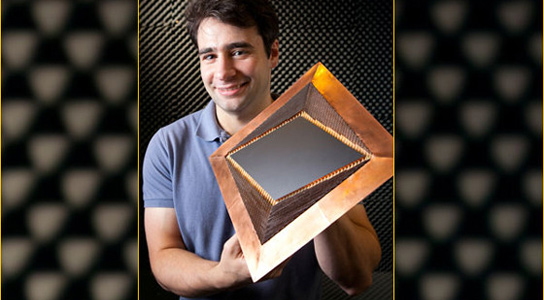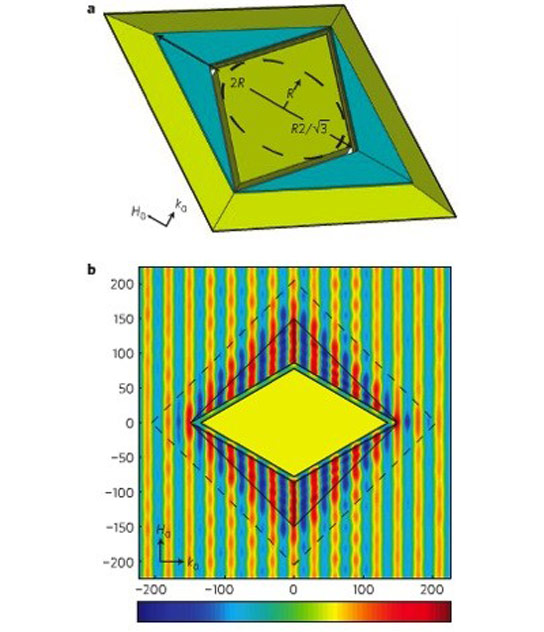Duke University Creates “Perfect” Microwave Cloak
November 14, 2012

Perfect invisibility cloak built by Duke University graduate engineering students. Credits: Duke University News.
The scientists published their findings in the journal Nature Materials. This illusion does have drawbacks. It only works from one direction, and would be difficult to achieve with visible light. The initial invisibility cloaking papers from 2006 sparked a flurry of activity to move the work on to different wavelengths.

Simulations of the fabricated cloak design. Figure by Nathan Landy & David R. Smith
The scientists at Duke University took a different approach. They tried to rework the edge of a microwave cloak so that they line up, ensuring that the light passes around with no reflections.
A diamond-shaped cloak, with properties carefully matched at its corners, was used to shuttle light perfectly around a cylinder 7.5 cm in diameters and 1 cm tall.
While the illusion is perfect, it only works in one direction. It would also be difficult to replicate this at optical wavelengths. However, microwaves have many applications, primarily in telecommunications and radar, and improved versions of cloaking could vastly improve microwave performance.
No comments:
Post a Comment